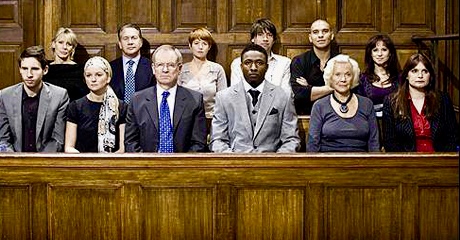Will and court order drafters should be aware of the rule in Saunders v. Vautier, (1841) 41 E.R. 482), a decision of the English courts of equity from 1841.
The rule occasionally comes to my attention when a will attempts to make a bequest to a mentally capable adult over the age of majority to take effect at a much later date (such as age 50), but the will drafter fails to provide for a “gift over” to an alternate beneficiary in the event that the beneficiary does not live to the later age and can take the bequest outright.
In such a drafting event, the adult beneficiary is able to apply to the court invoking the Saunders v. Vautier rule to collapse the trust provisions and take the bequest at the time of the deceased’s death without having to attain the later stipulated age.
A typical example is where a beneficiary (such as a grandchild) is a capable adult of sound mind and the will bequests that $50,000 be payable to the beneficiary on his 25th birthday, the income to be payable to him annually until he attains that age. Â In this event, since there is no gift over to another beneficiary if the beneficiary does not attain the age of 25, upon attaining the age of majority (being 19 in British Columbia), the said beneficiary can call for the capital and any income withheld during his minority to be paid forthwith.
The result would be different if the will stated that the trustee was to set aside $50,000 for each grandchild who is under 25 when the testator dies, and that if a grandchild died before attaining age 25 leaving children surviving him, then those children (being great-grandchildren of the testator) would take the deceased grandchild’s share. In that the interests of the great-grandchildren need to be considered, and the Saunders v. Vautier rule will not apply as there was a gift over to the great-grandchildren in the event the grandchild did not reach age 25.
The leading Canadian case is the Supreme Court of Canada decision of Baschau v. Rogers Communications Inc., 2006 SCC 28, which stated at paragraph 21:
The common law rule in Saunders v. Vautier can be concisely stated as allowing beneficiaries of a trust to depart from the settlor’s original intentions, provided that they are of full legal capacity and are together entitled to all the rights of beneficial ownership in the trust property.  More formally, the rule is stated as follows in Underhill and Hayton: Law of Trusts and Trustees (14th edition, 1987), at paragraph 628:
If there is only one beneficiary, or if there are several beneficiaries, whether entitled concurrently or successively, and they are all of one mind, and he or they are not under any disability, the specific performance of the trust may be arrested, and the trust modified or extinguished by him or them, without reference to the wishes of the settlor or trustees.
Vested or Contingent Gift?
An analysis as to whether the rule in Saunders v. Vautier applies or not requires an examination of the difference between a vested and a contingent interest.
In Campbell Estate, 2005 BCSC 1561 at paragraph 13 stated:
A contingent interest is one that is subject to the happening of an event that may never occur. A vested interest, on the other hand, is one the enjoyment of which is merely postponed, though it may be subject to subsequent divestment. . . . In other words, if the gift is subject to a condition precedent, then it is contingent; if it is subject to a condition subsequent (which will cause the interest to be divested if the condition is met) it is vested subject to divestment.
There is a presumption in law of early vesting and to avoid an intestacy if possible. (Fargey v Fargey Estate, 2015 BCSC 721).
Saunders . Vautier Applied
Saunders v Vautier was applied in Grieg v National Trust, (1998) 20 ETR (2d) 309, where the petitioner was involved in an accident as an infant, who later applied to the court to determine the trust set out in the court-ordered settlement of her lawsuit after she attained the age of majority.
The terms of the court-ordered trust were that the corporate trustee was directed to invest the trust fund and to pay out such amounts from the income and capital of the fund as required by the petitioner during her infancy.
After the petitioner became 19 years of age, the trustee was directed to pay the petitioner the income from the trust until she became 25 years of age, at which time one-half of the capital and any accumulated income was to be paid to her. The balance of the trust was to remain invested until she became 30 years of age, after which time she should be paid the total standing to her credit.
The court held that even though the trust was settled by way of a court order, the rule in Saunders v. Vautier still applied since the beneficiary was of full capacity, and there being no gift over, the beneficiary had the full beneficial interest, both as to payments during her lifetime and throughout the control of the reversionary interest.
As such, the petitioner had the right to determine the trust and receive the sum held for her on her behalf. Â The court varied the trust to pay the petitioner the entire sum upon her attaining age 19.
Saunders v Vautier Not Applied
Saunders v. Vautier was held not to apply in Little v Salterio 14 Sask. R. 18, where a father’s will directed his trustee to pay the net income from the residue of his estate to his daughter until she attained the age of 45 years, at which time he directed that the capital of the residue be paid to her absolutely.
The will further provided that in the event that his daughter died before attaining the age of 45 years, then the income was to be used for the benefit of his granddaughter until she attaining the age of 25, at which time he directed that the capital be paid to her absolutely.
The testator died when the daughter was 35 years of age and the granddaughter age 10. The daughter applied to the court for an order immediately vesting the residue of the estate.
Her application was refused on the basis that her bequest had not vested and was contingent upon her attaining the age of 45 years, and that the gift over to the granddaughter prevented the vesting of the trust property until she did actually attain the age of 45 years.
Since the gift of capital to the daughter was consequently not vested absolutely, but was contingent upon her attaining the age of 45 years, she was not entitled to collapse the trust.
The application was opposed by the Official Guardian of Saskatchewan, who relied upon the decision Berwick v Canada Trust Co. (1948) SCR 151 for the proposition that where there are no words of immediate gift, the gift is not vested absolutely and therefore immediate payment will not be ordered under the rule in Saunders v. Vautier.
The Berwick decision of the Supreme Court of Canada was itself an application under Saunders v. Vautier that was dismissed by the court.
In Berwick a trust created by the will of the testator provided that income be paid to his son for 10 years and that the capital be paid at the expiration of the 10 years. Â The will further provided that the son’s share was to be given to the son’s estate in the event that the son predeceased the testator or died before the expiration of the 10-year period.
The son applied for the capital before the expiration of the 10 years but the court dismissed his application since there was a gift over to the son’s estate and the bequest to the son was contingent upon the expiration of 10 years.
Conclusion
Will drafters are often asked by testators to delay a bequest to a beneficiary until a much later date than the age of 19, which in itself is achievable if the will is drafted correctly-that is, by providing for a “gift over” to an alternate beneficiary to provide for the event that the first beneficiary may die before reaching the age of entitlement to the full bequest. Unless the will drafter is aware of the rule in Saunders v. Vautier there may be a failure to provide for a gift over, which will entitle a mentally capable beneficiary who reaches the age of 19 to apply to collapse the trust and take the bequest absolutely without having to await attaining the stipulated later age set out in the will.










